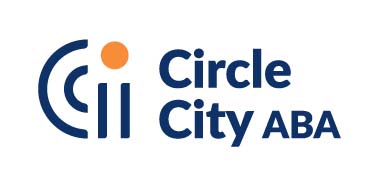
Applied Behavior Analysis (ABA) therapy is a widely used, evidence-based treatment for children with Autism Spectrum Disorder (ASD). It is a safe and effective method of helping children learn new skills, reduce problem behaviors, and increase independence. ABA therapy is highly individualized and can be tailored to each child’s strengths, needs, and goals. Let’s take a look at what exactly Applied Behavior Analysis therapy entails.
How Does Applied Behavior Analysis Work?
ABA therapy uses positive reinforcement methods to help children learn new skills. The therapist will identify areas that the child needs to work on and create an individualized plan for those areas. Then, the therapist will use techniques such as prompting, shaping, chaining, reinforcement, fading, and generalization to help the child learn those skills. For example, if a child needs to learn how to brush their teeth independently, the therapist might start by prompting them through every step of the process until they are able to do it without any prompts. The therapist might then shape the behavior by providing reinforcement after each successful step until, finally, they are able to complete the entire process independently.
What to Expect in ABA Therapy
- Overview of Sessions
ABA therapy sessions typically last 1 to 3 hours, depending on the child’s needs. They may occur in various settings, including homes, schools, or therapy centers. During sessions, a Registered Behavior Technician (RBT) works closely with the child under the supervision of a Board-Certified Behavior Analyst (BCBA). - Goals of Therapy
The goals of ABA therapy are individualized. They may include improving communication skills, enhancing social interactions, teaching daily living skills, and reducing challenging behaviors. Parents and therapists collaborate to set measurable objectives that align with the child’s needs.
Common Techniques Used in ABA Therapy
- Discrete Trial Training (DTT)
DTT breaks skills into small, manageable steps. The therapist presents a stimulus, prompts a response, and reinforces the correct answer. This method helps children learn skills systematically. - Natural Environment Teaching (NET)
NET incorporates learning into everyday activities. Therapists use natural contexts to teach skills, making learning more relevant and engaging for the child. - Pivotal Response Training (PRT)
PRT focuses on pivotal areas of a child’s development, such as motivation and self-management. This technique encourages children to take the lead in their learning, fostering independence.
Who Benefits from Therapy?
ABA therapy can benefit many different types of individuals and populations. It has been used successfully with individuals with ASD, intellectual disabilities, and developmental delays. It has also been used effectively in educational settings to improve academic performance and classroom behavior in students who struggle in these areas due to their disability or delay. Research has shown that ABA therapy can be an effective form of treatment for people of all ages and abilities when it is appropriately implemented by qualified professionals trained in its use.
Frequently Asked Questions
- Is ABA Therapy Only for Children with Autism?
ABA therapy can benefit individuals with various developmental disorders, not just autism. It is effective for improving behaviors and skills in many contexts. - How Long Does ABA Therapy Last?
The duration of therapy varies based on individual needs and goals. Some children may participate for a few months, while others may engage in therapy for years.
About Circle City ABA
Circle City passionately nurtures progress through play with ABA therapy. We develop programs and services specifically designed for each child. Our child-centered, compassionate approach to therapy brings family goals and clinical best practices in tandem to help kids learn and grow. We’ll work together to define success and help your child achieve it. Contact our admissions team for more information on our services and how we can support you and your child.
In summary, ABA therapy is a safe and effective form of treatment for many different types of individuals, including those with Autism or other intellectual disabilities or developmental delays. It uses positive reinforcement techniques such as prompting, shaping, chaining, fading, generalization, and more to help children learn new skills while reducing problem behaviors and increasing independence. If you would like more information about ABA therapy or if you are ready to start your journey today, please visit circlecityaba.com!


